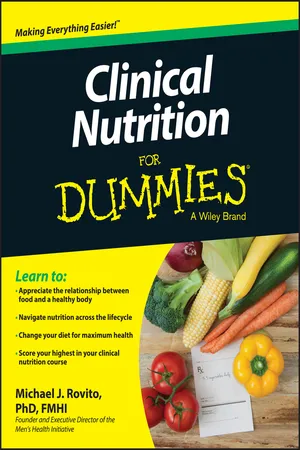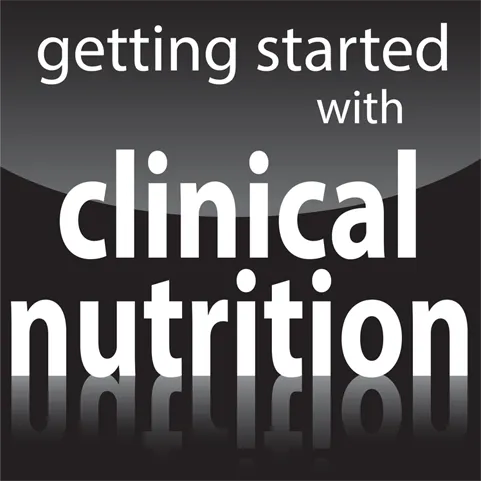
- English
- ePUB (mobile friendly)
- Available on iOS & Android
Clinical Nutrition For Dummies
About This Book
Get up to date on clinical nutrition for school, work, or your own health
From the proper function of the major organs and the role that proper nutrition plays in their functioning, to a breakdown of carbs, proteins, fats, vitamins, and minerals, Clinical Nutrition For Dummies provides you with the easy-to-read guide you need to immerse yourself in the subject! Written in the fun style that the For Dummies series has become known for, the book is perfect for students in the wide variety of fields that require an in-depth understanding of clinical nutrition, or for those who want to improve their own lives through better nutrition.
Dive right into the book for an exploration of the chemical and functional components of food, how to properly assess your nutritional intake, the changing face of nutrition throughout the human lifespan, and so much more! This handy resource offers a wealth of information, and specifically addresses the growing obesity and diabetes epidemics that promise to make the study of clinical nutrition more important than ever. Includes a complete breakdown of the relationship between nutrition and chronic diseases.
- Explores the nutritional requirements at various life stages, from pediatric through geriatric
- Features information on the importance of proper nutrition during pregnancy
- Shares tips for modifying dietary intake and health behavior theory, along with properly communicating health information
Clinical Nutrition For Dummies is your complete, fun guide to the topic of nutrition—dive in today to get started on the pathway to mastering this increasingly important subject.
Frequently asked questions
Information
Getting Started with Clinical Nutrition

- Discover the basic concepts of nutrition and how new approaches seek to address both individual and global healthcare issues
- Recognize the components of a career in clinical nutrition and identify which area interests you most
- Understand how nutrition is increasingly being integrated into educational and clinical applications to promote wellness of groups and individuals
- Become familiar with the different nutrients, the recommended intake levels, and how diet promotes or hinders optimum heath
- Discover strategies that help you change behaviors to make your life, or your patients’ lives, longer and healthier
Getting Clinical about Nutrition



- You must eat fruits, vegetables, and whole grains.
- You must moderate your fat, salt, and sugar intakes.
- You must exercise.
Pillars of the Practice: Recognizing theLinks between Nutrition and Health
Revisiting traditional views of food and health
A snapshot of the past
Fast forward to today
Introducing the key tenets of clinical nutrition
- You are what you eat: If you eat too much fat and calories without being active, you'll put on weight. If you eat healthy foods, you'll be healthy. If you eat lots of carrots, you'll be . . . okay, well this one doesn't quite work, but interestingly you can get beta-carotene poisoning, which makes your skin turn orange . . . like a carrot! Silly example aside, the point is still a good one: What you put into your body has a direct affect on your body and your health.
- An apple a day keeps the doctor away: The quality of the food you eat has a direct impact on your health. (I cover the role of diet in a variety of diseases in the chapters in Part II). Ask yourself this question: Would you put sand into the fuel tank to make the vehicle run? Of course not. Not unless you want to irreparably damage the inner workings of your car. A car needs gasoline, not sand, just as your body needs healthy, whole foods for better health outcomes. Both need the best sources of fuel to optimally perform.
- Don't eat anything you don't recognize as food: Your body evolved to digest food, not food products, to maintain health. You want to eat as many simple, whole foods as possible. Eating oranges is ...
Table of contents
- Cover
- Title Page
- Table of Contents
- Introduction
- Part I: Getting Started with Clinical Nutrition
- Part II: You Are What You Eat
- Part III: Major Organ Systems and Nutrition
- Part IV: Nutrition through the Lifespan
- Part V: Theoretical Foundations of Health Behavior
- Part VI: The Part of Tens
- About the Author
- Cheat Sheet
- More Dummies Products

